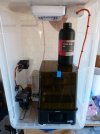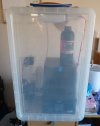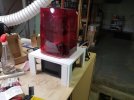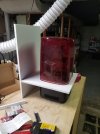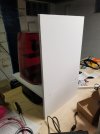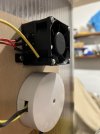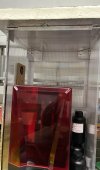Big Train James
Western Thunderer
I know that this topic has been discussed within other threads, but I have some specific questions about the wiring connections.
A) The temperature controller has a set of terminals for "Cooling". Does anybody use this in this application. I wondered if it was simply running the fan without the heater coil. Do I need to wire something to it, or can I just ignore it.
B) Do I need to connect the hot and neutral wires to the controller twice, once to the power supply terminals and the other to the Heating terminals. If I'm understanding correctly, the Power supply terminals supply power to the controller, but it isn't passed through the board to the Heating terminals. I need a second set of hot and neutral wires to the Heating terminals, and the controller just acts as the switch and nothing else. Is this correct?
C) I have the typical heating fan as found on Amazon. Does the housing get hot enough that I should be concerned about it's proximity to the enclosure material? One of the resins I need to print specifies a temperature of 96ºF for optimal printing. I could see the fan needing to run quite a bit to achieve that, and I worry that something close by may be affected.
I think I have a handle on it, but I want to make sure. I'd prefer to not make any foolish errors, or worse yet do something dangerous. Not interested in starting any fires.
Thanks for any tips.
Jim
Editted to add diagrams. One is from the back of the controller, the other is from the Amazon listing for the same unit.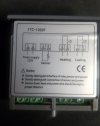
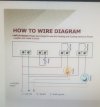
A) The temperature controller has a set of terminals for "Cooling". Does anybody use this in this application. I wondered if it was simply running the fan without the heater coil. Do I need to wire something to it, or can I just ignore it.
B) Do I need to connect the hot and neutral wires to the controller twice, once to the power supply terminals and the other to the Heating terminals. If I'm understanding correctly, the Power supply terminals supply power to the controller, but it isn't passed through the board to the Heating terminals. I need a second set of hot and neutral wires to the Heating terminals, and the controller just acts as the switch and nothing else. Is this correct?
C) I have the typical heating fan as found on Amazon. Does the housing get hot enough that I should be concerned about it's proximity to the enclosure material? One of the resins I need to print specifies a temperature of 96ºF for optimal printing. I could see the fan needing to run quite a bit to achieve that, and I worry that something close by may be affected.
I think I have a handle on it, but I want to make sure. I'd prefer to not make any foolish errors, or worse yet do something dangerous. Not interested in starting any fires.

Thanks for any tips.
Jim
Editted to add diagrams. One is from the back of the controller, the other is from the Amazon listing for the same unit.




